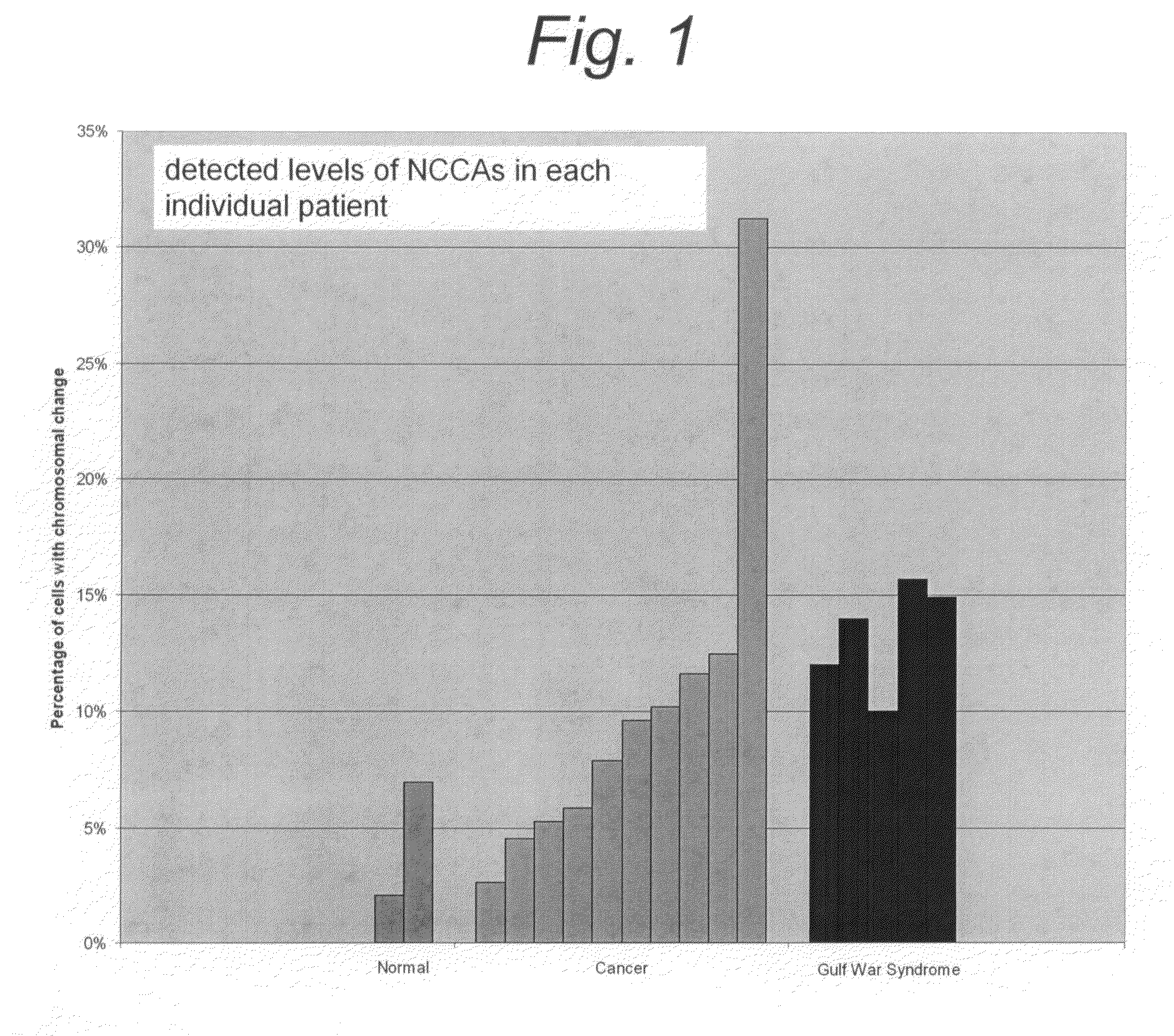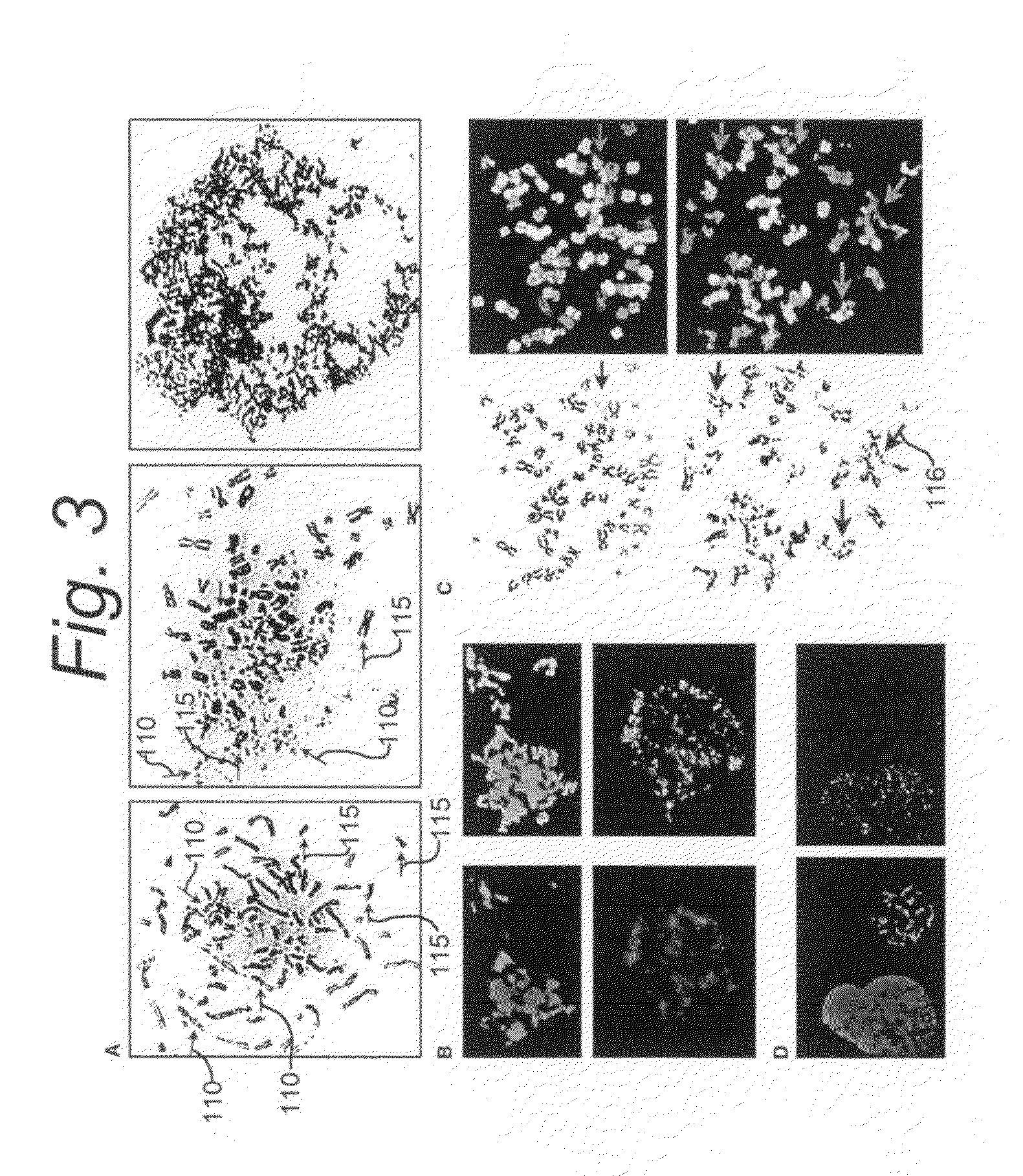Use of non-clonal chromosomal aberrations for cancer research and clinical diagnosis
a cancer and clinical diagnosis technology, applied in the field of cancer diagnostic methods, can solve the problems of incongruity of current cancer concept, difficult data interpretation, complex karyotypical changes that occur, etc., and achieve the effect of determining the latent genomic instability level of a patient and increasing or decreasing genomic stability
- Summary
- Abstract
- Description
- Claims
- Application Information
AI Technical Summary
Benefits of technology
Problems solved by technology
Method used
Image
Examples
Embodiment Construction
[0084]There is described in this disclosure a new type of mitotic cell death, termed “chromosome fragmentation,” which is a consequence of certain cellular stressors such as inherited genomic instability or chemotherapeutic treatment in M phase, and a pathologically related process that results in the breakdown of the chromosomes, elimination of genetic material, and subsequent death of cells. This form of cell death is different from typical apoptosis and mitotic catastrophe. It is caspase independent, does not exhibit the typical oligosomal DNA degradation of apoptosis, and is not inhibited by overexpression of Bcl-2. In the case of mitotic catastrophe, classic methods of inducing mitotic catastrophe do not increase levels of chromosome fragmentation detectable by cytogenetic analysis. Chromosome fragmentation, although morphologically similar to, is distinct from S-phase premature chromosome condensation (and chromosome pulverization) as chromosomes undergoing fragmentation are f...
PUM
| Property | Measurement | Unit |
|---|---|---|
| restrictive temperature | aaaaa | aaaaa |
| restrictive temperature | aaaaa | aaaaa |
| restrictive temperature | aaaaa | aaaaa |
Abstract
Description
Claims
Application Information
 Login to View More
Login to View More - R&D
- Intellectual Property
- Life Sciences
- Materials
- Tech Scout
- Unparalleled Data Quality
- Higher Quality Content
- 60% Fewer Hallucinations
Browse by: Latest US Patents, China's latest patents, Technical Efficacy Thesaurus, Application Domain, Technology Topic, Popular Technical Reports.
© 2025 PatSnap. All rights reserved.Legal|Privacy policy|Modern Slavery Act Transparency Statement|Sitemap|About US| Contact US: help@patsnap.com



